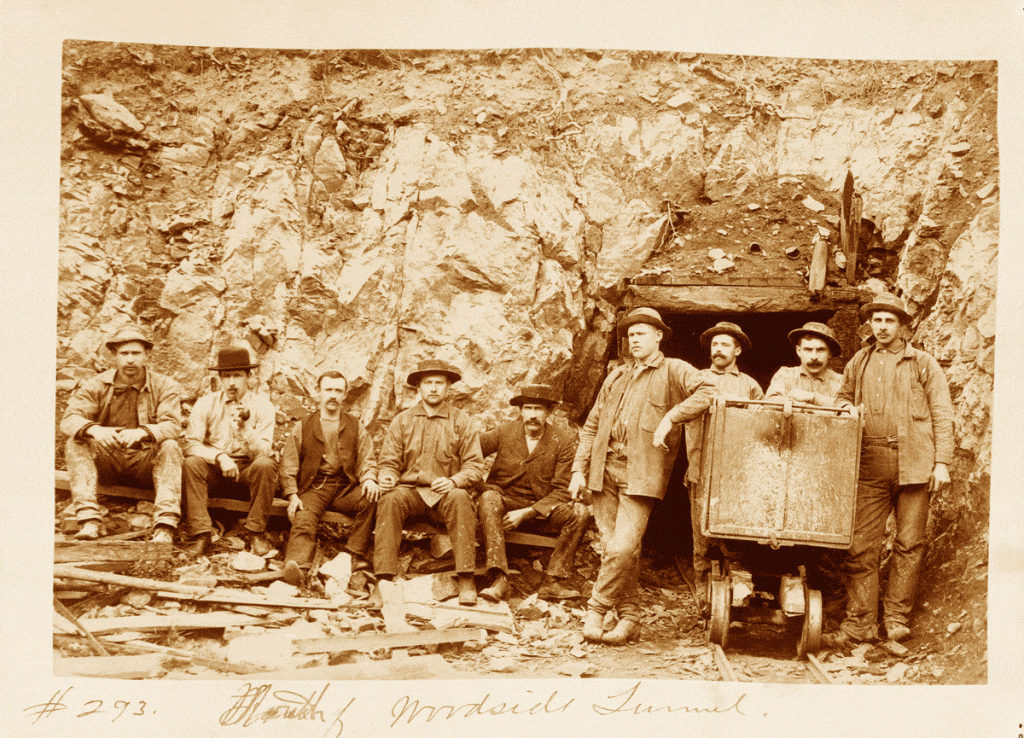The figures for mineral production in the Park City Mining District are substantial. The Utah Geological Survey estimates that from 1869 until the last mine closed in 1982, miners pulled over 8,500 tons of silver from the ground here, as well as 40 tons of gold, 60,000 tons of copper, 700,000 tons of zinc, and 1,300,000 tons of lead.

Credit: Park City Historical Society & Museum, PCHS Duplicate Negative Collection
How did so many minerals get concentrated in the ground beneath our feet? Go back 35 million years, to when this was an extremely dangerous place. Volcanoes running east to west through what would become the Wasatch Mountains spewed superheated magma, which came into contact with water and cracked and fractured the landscape. The volcanoes eroded away but their granite cores remained and were the perfect host rock to which minerals in this primordial soup attached. Beginning in 1868, prospectors began finding the outcrops of those veins, setting the course for a future Park City.
The geology of Park City, along with other prehistoric geologic events in Utah, will be the subject of a free lecture by Bob Biek, Senior Scientist with the Utah Geologic Survey. He will discuss how this one small mining district came to be, which set the stage for all that followed.
Biek will also describe two literal earth shattering events which have only recently been discovered. One is the 2014 discovery of the world’s largest earth slide, called the Markagunt gravity slide. Geologists for years puzzled over geologic oddities they couldn’t explain, such as the discovery of “old” lava laying on top of “younger” lava. The landslide, no longer visible to the untrained eye because of millions of years of erosion, stretched from west central Utah’s Tushar Mountains to the Brian Head plateau near Cedar City. The landslide covered a landmass the size of the Great Salt Lake.
A second, smaller landslide called the “Silver Creek Chaos” explains numerous startling discoveries unearthed by excavators readying new construction sites near Silver Creek Junction, where U.S. 40 joins Interstate 80. Twenty years ago backhoes began unearthing petrified trees that were once giant conifers growing on the flanks of volcanoes. Mudflows from the volcanoes moved the trees and buried them under volcanic ash and mud thirty million years ago, only to be discovered in the past two decades. The mudflows also picked up debris from other geologic eras. Some of Utah’s best fossils of sabre tooth tigers, mammoths and other ice age animals are also found in the Silver Creek Chaos.
Mr. Biek’s lecture will be given on Wednesday, April 3 from 5-6 pm at the Park City Museum Education and Collections Center at 2079 Sidewinder Drive. This is a presentation of the Park City Museum and the Friends of Ski Mountain Mining History.